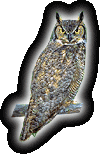HOME | home
Iron on the Hearth | Iron, Cast and Forged | Cast Iron Cooking 4 | Copperware | Copper and Brassware 2 | Brass Alcohol Stove | Pipe Smoking | Tobacco the Indian Weed | Women's Pipes | Clay Pipe Collection | Pipes2 | pipes3 | Pipes4 | Pipe Tampers | Early Lighting 1 | Early Lighting 2 | Early Lighting 3 | Early Lighting 4 | Early Lighting 5 | Early Lighting 6 | My Lamps | Center Draft Lamps | Center Draft Lamps II | Center Drafts III | Miners lamps | Matches and Match Safes
pipes3
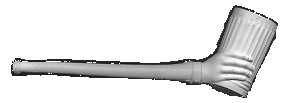 More of my Collection More of my Collection 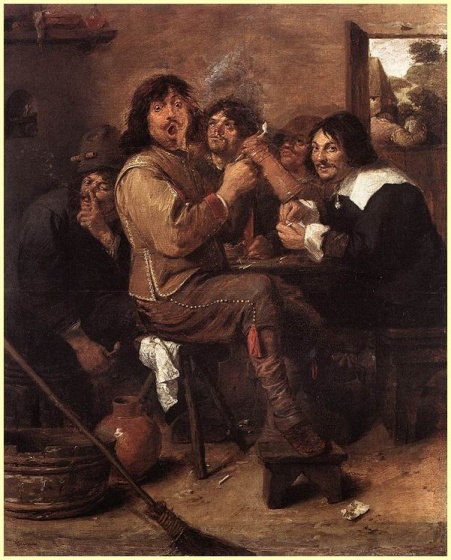  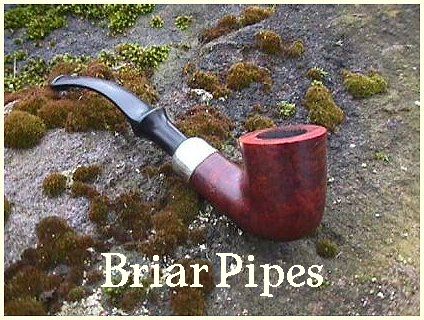 Of all woods, the Briar Burl is unique for making pipes. The briar pipe begins as a Burl on the root system of the White Heath Tree (Erica arborea). Heath Trees are low growing, very hearty, shrub-like plants which grow primarily in the dry, arid, rocky wastelands around the Mediterranean Sea. They are also sometimes called Heather Trees. Briar wood is a tough material and is, porous and nearly impervious to heat. Burls for briar pipes can often be 50 to 100 years old when they are harvested for pipe making. Briar was not used extensively for pipe making until the second half of the 19th Century long after clay and Meerschaum had become established as materials for the manufacture of smoking pipes. Around 1840 a pipemaker named Francois Comoy started carving pipes made from a material called Bruyere which later became to be known as Briar. The first Briars were introduced into England around 1854. Saint-Claude, France where Comoy first started carving these pipes became to be known as "The Pipe Making Capital". At this time only straight pipes were carved out of Briar and were most often fitted with amber, vulcanite or horn mouth pieces. The beauty of a wood pipe cannot be denied and there are thousands of shapes in this material being made today.
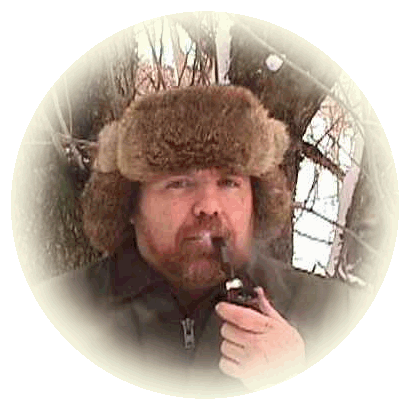 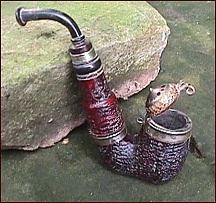 I have had this "TYROLEAN" style Briar for 20 years!
The great pipe pictured above is a flea market find. I find the design so whimsical and wonderful. It is like a German Porcelain Pipe crossed with and English Briar! The little hinged lid keeps the coals in. The bit is black cattle horn and the fittings are silver plated brass. There is also a turned ferrule of horn just above the briar stem section. I like the feel of the rusticated finish and the way it fits my hand. When you puff on it the smoke streams out the little holes in the lid in the most delightful fashion. It's one of the first pipes I ever purchased. The side is stamped "Foreign made", whatever that means! What a hoot! In another place it is stamped "Bruyere". There is some other mark like a letter C under bruyere I cannot read. I am unsure of the age, perhaps early 20th Century.
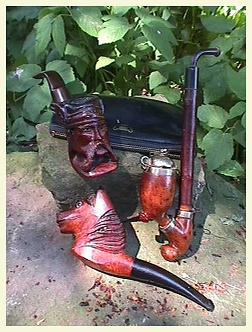 Carved Pipes are true works of art.
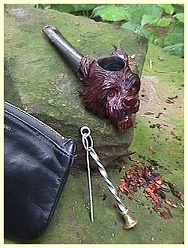 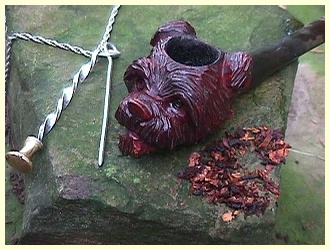 This estate pipe depicts a Border Terrier or Cairn Terrier dog in Briar. He has a strait bit that shows some wear but he is a dandy! Another Scottish subject and perfectly carved with attitude. He is a lawn sale find "estate" pipe. Marked only as handmade genuine briar.
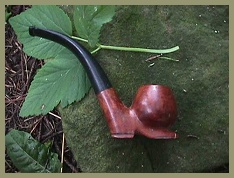 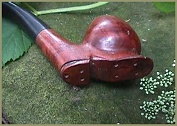 This is a small Briar in the shape of a boot. Marked only as made in Italy. This is another favorite of mine as it is a perfect lady-pipe size. Smoking it is good for the "soul".
okes cool and very long as the tobacco chamber is very deep.
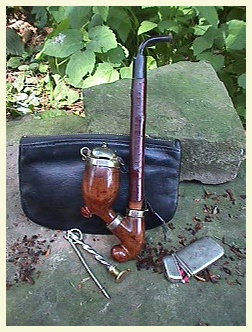 German or Austrian style pipe made of Briar in Czechoslovakia.
-Briar with nickel plated brass fittings and horn mouth piece.
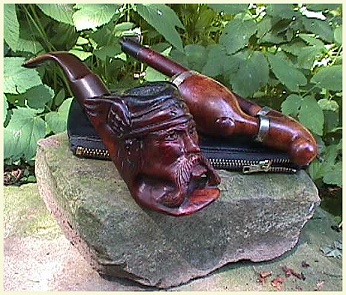 Viking Pipe, marked Mastercraft German Briar
Hand Carved
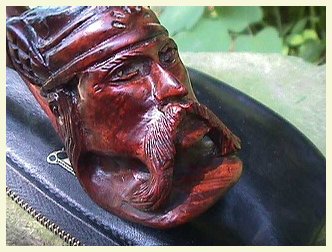 Close up of the Viking Briar or Vercingetorix, a Gallic hero pipe more accuratly.
(These are more commonly called a Viking and some manufacturers even went to the point of stamping them with the word but, these are really Vercingetorix, a Gallic hero who united and led the Gaul's against Caesar. A good way to tell the difference between a Viking and Vercingetorix is a Viking has horns on his helmet and Never wings. A French pipe maker by the name of Sommer made a few for Dunhill in the 40's or 50's and since then everyone has copied it and some where a long the way it got called a Viking and lost a lot of it's detail starting with the lock of hair coming from out the front of his helmet and the detail of the helmet and wings and so on.)
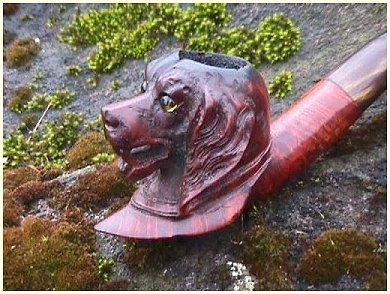 French Spaniel Pipe pipe of Briar with glass eyes and bit of horn.
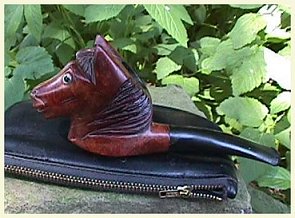 Funky Horse Pipe in Briar with glass eyes
I like this one because it looks like an old tyme Morgan Horse from Vermont.
I hated tobacco. I could have almost lent my support to any institution that had for its object the putting of tobacco smokers to death...I now feel that smoking in moderation is a comfortable and laudable practice, and is productive of good. There is no more harm in a pipe than in a cup of tea. You may poison yourself by drinking too much green tea, and kill yourself by eating too many beefsteaks. For my part, I consider that tobacco, in moderation, is a sweetener and equalizer of the temper.
-Thomas Henry Huxley
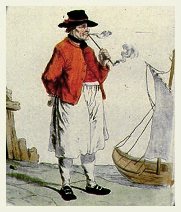 "A Dutchman without a pipe is a national impossibility. If a Dutchman were deprived of his pipe and tobacco, he would not even enter Paradise with a glad heart."
-Schotel
Please note: We are not able to give appraisals of your pipes you plan to sell on eBay! We will help serious collectors when we can. Enquiries are welcome from fellow collectors and historians, but please, we do not have the will or expertise to evaluate pipes for resale.
 |
